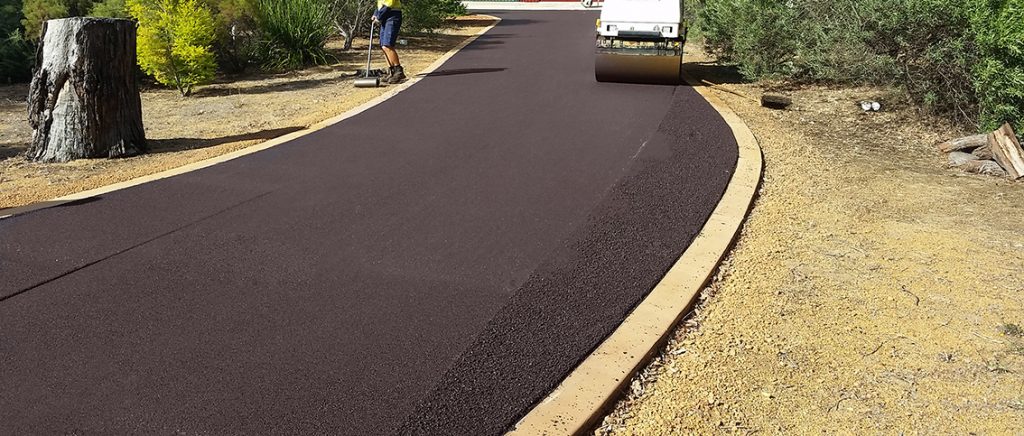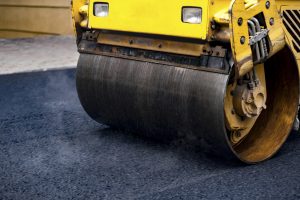Maximize Room Efficiency with Hot Mix Asphalt Angled Parking Lot Solutions
Maximize Room Efficiency with Hot Mix Asphalt Angled Parking Lot Solutions
Blog Article
Opening the Secrets of Warm Mix Asphalt Innovation
Discovering the midsts of hot mix asphalt innovation uncovers a globe where careful procedures and accurate formulas merge to form our roads and facilities. The blend of fillers, binders, and accumulations isn't just a building task but a strategic orchestration of longevity and performance. As we peer into the complex dance of elements, a tapestry of durability and sustainability unfolds. What lies beneath this surface of asphaltic mastery, and what keys wait to be revealed in the realm of paving technologies?
Value of Warm Mix Asphalt
Hot Mix Asphalt plays an important role in contemporary framework development due to its longevity and cost-effectiveness. As the most generally utilized paving material for roadways, freeways, and auto parking great deals, Warm Mix Asphalt uses a range of benefits that add to its significance in construction jobs.
The longevity of Hot Mix Asphalt stems from its make-up, which consists of aggregates, binder, and filler products that are thoroughly chosen and mixed to fulfill particular efficiency demands. Overall, the importance of Warm Mix Asphalt in facilities growth can not be understated, as it continues to be a cornerstone of modern construction practices.
Parts of Asphalt Mixes
The composition of asphalt blends contains very carefully selected accumulations, binder, and filler products that are critical for achieving particular performance needs. Aggregates are the main element of asphalt blends, providing stamina and security. These accumulations can be all-natural, such as crushed rock or crushed rock, or artificial, like recycled materials from old pavements. The binder, typically bitumen or asphalt cement, holds the accumulations with each other and offers versatility and longevity to the mix. The selection of the binder is essential as it directly influences the mix's performance in different climate condition. Fillers, such as hydrated lime or Rose city concrete, are made use of to boost the mix's workability and aging resistance. Angled Parking.
The combination and proportion of these elements play a significant function in establishing the quality and performance of the asphalt mix. Engineers very carefully create the mix to fulfill particular requirements, considering variables like website traffic volume, environment conditions, and sidewalk life expectancy. Appropriate selection and balancing of aggregates, binder, and fillers are vital for creating sturdy, resilient asphalt pavements.
Mixing and Production Methods

As soon as the aggregates are picked, the binder, commonly asphalt concrete, is added to bind the products with each other. The binder's top quality and quantity dramatically impact the mix's stamina, resistance, and flexibility to environmental variables. Furthermore, fillers like moisturized lime or Rose city cement might be incorporated to boost specific characteristics of the asphalt mix, such as its workability or dampness resistance.
Throughout production, the aggregates and page binder are heated up, usually between 250-325 ° F(121-163 ° C ), to facilitate mixing and guarantee proper coating of the accumulations. The mixing procedure needs to be extensive to accomplish an uniform blend that promotes the preferred performance characteristics of the asphalt. Numerous techniques, such as batch blending or drum blending, are employed to attain consistent and top quality asphalt mixes for construction jobs.
Variables Affecting Asphalt Efficiency
Elements affecting asphalt performance encompass a series of variables that affect the toughness, long life, and total quality of asphalt pavements. One essential factor is the top quality of products made use of in the asphalt mix. The kind and resource of aggregates, the binder quality, and the additives all play a significant duty in establishing the performance of the asphalt pavement. The rank of accumulations is important as it affects the mix's resistance, security, and workability to splitting and rutting.

Design considerations, such as sidewalk thickness and water drainage, are necessary in making certain the long-lasting performance of the asphalt sidewalk. By meticulously considering these professionals, elements and engineers can maximize asphalt performance and enhance the solution life of sidewalks.
Sustainable Practices in Asphalt Technology

WMA permits for the manufacturing and placement of asphalt mixes at lower temperatures contrasted to standard hot-mix asphalt, resulting in minimized power usage and greenhouse gas discharges. The use of porous asphalt mixes can aid reduce stormwater runoff problems by permitting water to infiltrate through the sidewalk and into the ground, promoting natural water purification and charge procedures.
Conclusion
Finally, hot mix asphalt technology plays an essential duty find more in modern-day framework advancement due to its longevity and cost-effectiveness. By carefully balancing parts, employing correct mixing strategies, and thinking about various variables, engineers can produce top notch asphalt blends that endure hefty web traffic loads and rough weather. Embracing lasting techniques, such as using recycled products and warm-mix innovations, even more improves the ecological kindness of asphalt modern technology.
Blending and manufacturing techniques in hot mix asphalt modern technology entail the exact mix and processing of accumulations, binder, and fillers to create a high-performance and durable asphalt mix.Elements influencing asphalt efficiency include a home range of variables that impact the sturdiness, long life, and general quality of asphalt sidewalks. Sustainable practices in asphalt modern technology encompass various campaigns intended at lowering the ecological effect of asphalt production and paving processes. By incorporating recovered asphalt pavement (RAP) and recycled asphalt roof shingles (RAS) into brand-new asphalt mixes, the industry can considerably reduce the usage of raw products and energy, while likewise lowering landfill waste.
WMA enables for the production and positioning of asphalt blends at lower temperature levels contrasted to conventional hot-mix asphalt, resulting in minimized energy usage and greenhouse gas discharges.
Report this page